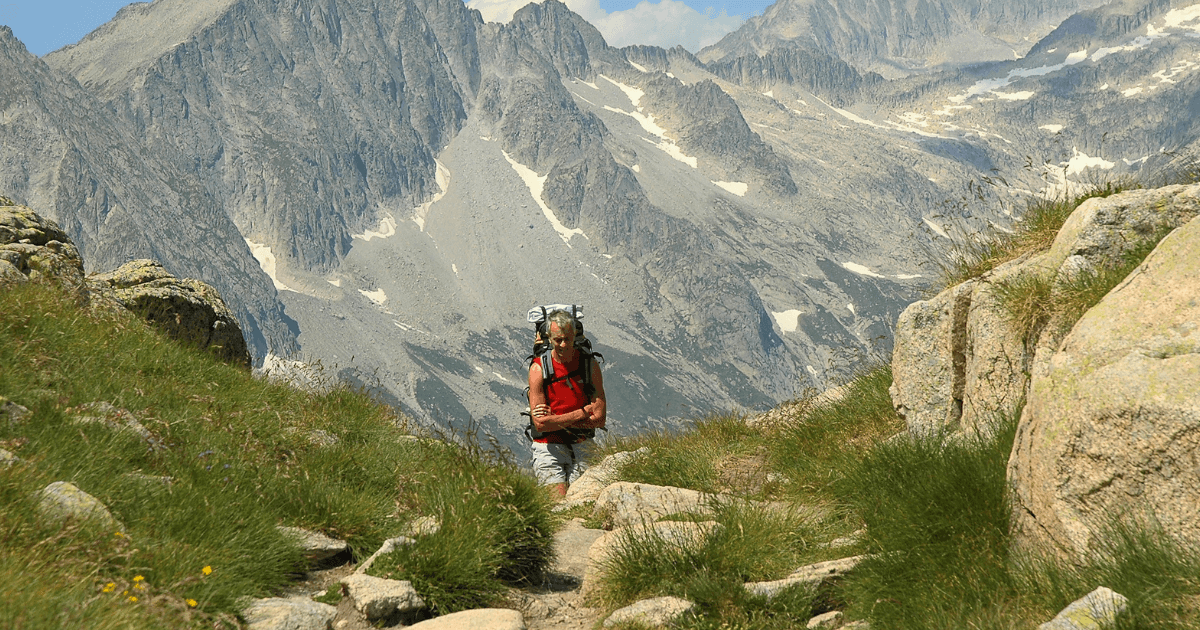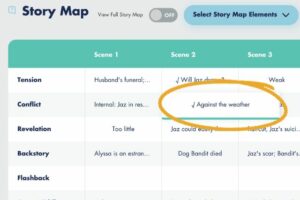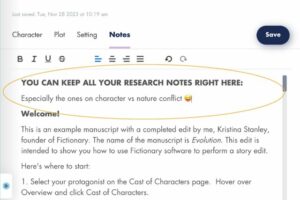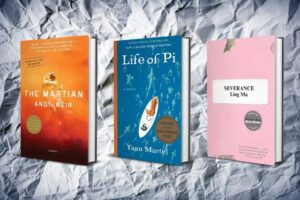
Conflict is one of the key aspects of storytelling. If there’s no conflict in your story… then you have no story. There are 5 major types of conflict in fiction you need to know about, my writerly friend. And one of those conflict types is character vs nature conflict.
This type of conflict is so popular because it speaks to something humans have been dealing with since the dawn of our existence. The battle between humankind and nature.
And that’s great… but how does this type of conflict work, and how can you use it to engage readers?
Excellent question.
I used to find writing conflict super difficult. Did I have enough conflict between my pages? Was that conflict strong enough? Had I done it right? I spent ages pouring over my early manuscripts deciding whether the conflict there was good enough…
Until I found the Fictionary Software. One of the 38 Story Elements Fictionary teaches you to use is conflict and, using the Story Map Visual Insight, you can easily track your use of Conflict throughout your novel.
Talk about a game-changer.
And character vs nature conflict is no different. You can track that too.
So, let’s delves in to what this kind of conflict is, and how you can use it to keep your readers flipping pages into the early hours.
What is Man vs Nature Conflict?
Ask yourself: Do I understand what character vs nature conflict is?
Conflict is all about opposition, and character vs nature conflict happens when your protagonist (main character) is fighting tooth-and-nail against the forces of nature. In these types of stories, the antagonist (villain) is not a person. Nature itself becomes the antagonist.
In other words, some kind of natural disaster is placing obstacles in the way of your protagonist (and likely your major side characters) getting what they want.
We’ll go into specific examples from fiction later, but character vs nature conflicts often see your characters battling:
- Tornados
- Earthquakes
- Raging storms
- Famine because of limited resources
- And more…
NOTE: You might see people refer to character vs nature conflict as man vs nature conflict. In this context, it doesn’t relate to male characters, but humanity as a whole. People also refer to it as Person vs. Nature conflict. I’ll be using all three terms throughout this article.
Action: Every time you use this type of conflict in your story, make a note of the natural force that’s causing the conflict, and whether you think the conflict is strong enough. If you’re using the Fictionary Software, it’s easy to track your conflict usage using the Story Map Visual Insight. You’ll be able to see the conflict you’ve used in every scene at a glance, and work out whether it best serves your story.

Why Person vs Nature is a Fantastic Type of External Conflict
Ask yourself: Do I understand why character vs nature conflict is so powerful?
Remember, external conflict (conflict that happens outside a character) is when an antagonist—or antagonistic force—places obstacles in the way of your characters achieving their goals. In other words, the antagonist or antagonistic force causes problems for your protagonist and major side characters.
Now, think about nature, and all the problems it can cause in our everyday lives.
How frustrating is it when you need to drive somewhere, but the roads are too icy? How annoyed do you get when you’ve spent ages getting ready for an important social event, then rain buckets down, destroying all your efforts? And isn’t it anger-making when a violent storm blows through and knocks out your electricity when you have a work deadline?
In each of these scenarios, nature causes a problem, which makes it harder for us to achieve our external goals.
And that’s part of the reason character vs nature conflict is so powerful.
It’s a universal human experience.
We all know what it’s like to go head-to-head with nature and lose. Your readers know how this feels too, so they’ll sympathise with your characters when man vs nature conflict stops them from getting what they want.
Action: Learn as much as you can about character vs nature conflict before you write your story, and keep notes on the discoveries you make. If you’re using the Fictionary Software, you can use the Notes panel next to each scene to keep all your research notes in one place and reference them easily.

Man vs Nature Examples
The best way to learn about a conflict type is to analyse examples from fiction and see how other authors do it. Luckily, there are plenty of character vs nature conflict novels we can use for this exact purpose.
Let’s look at three popular examples of person vs nature conflict in fiction.
The Martian by Andy Weir
In The Martian by Andy Weir the protagonist, Mark Watney is an astronaut who gets stranded on Mars.
In Weir’s novel, Mars itself (and more specifically, the uninhabitable environment on Mars) becomes the antagonist. Every time Mark tries to achieve something, the living conditions on Mars stand in his way (character vs nature conflict).
One notable example is related to the lack of food on the red planet.
Initially, Mark is starving because there’s no food (character vs nature conflict), so he rigs up a system to grow his own crops. But disaster strikes when the airlock on his ship fails and the resulting gravitational force destroys all his crops (character vs nature conflict).
Can you see how Andy Weir uses the harsh environment on Mars to create external conflict for Mark Watney, driven by nature?
Life of Pi by Yann Martel
In Yann Martel’s novel Life of Pi a storm in the Pacific Ocean causes a shipwreck (character vs nature conflict). The protagonist (Pi Patel) is stranded on a lifeboat with a Bengal Tiger.
Throughout the story, Pi has to survive the harsh conditions of the sea (character vs nature conflict) and being trapped on a small lifeboat with a Bengal tiger (character vs nature conflict). You can link every external conflict Pi faces back to nature.
Even the fact that Pi is isolated from everything and everyone (a core conflict in the novel) has a natural cause. If it weren’t for the sea, he could easily find people to help him on land.
Severance by Ling Ma
In, Severence, Ling Ma sets up an everyday world where her protagonist (Candace Chen) has a boring office job and everything is predictable. During this setup, she introduces The Shen Fever, an illness that doesn’t seem to pose much of a threat until…
The Inciting Incident, when The Shen Fever becomes a dangerous pandemic (character vs nature conflict).
Everyone (apart from Candace and a small group of survivors) fleas the city, and the rest of the novel is about Candice and the others surviving in a deserted and uninhabitable New York (character vs nature conflict).

Conclusion: Person vs Nature Conflict
There you have it, folks.
Mastering the art of character vs. nature conflict can transform your story into one readers will love. This type of conflict, when done well, creates stories that will have readers biting their nails to the quick.
It’s a potent weapon in your writerly toolbox, but like any tool, you’ve got to know how to use it.
That’s where Fictionary Software comes in.
This nifty tool helps you map out your conflict, ensuring it’s a wild roller coaster ride that keeps readers glued to your pages. And the best part? You don’t have to take my word for it. You can try it out for yourself, absolutely free.
Take a 7-day free trial of Fictionary Software.

